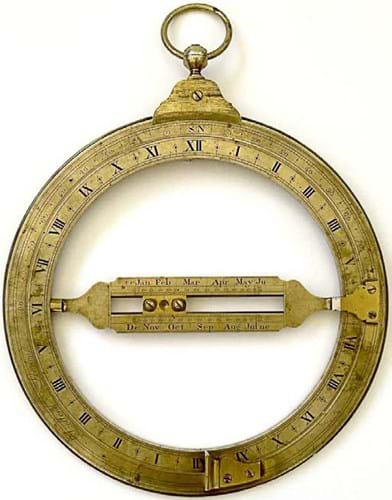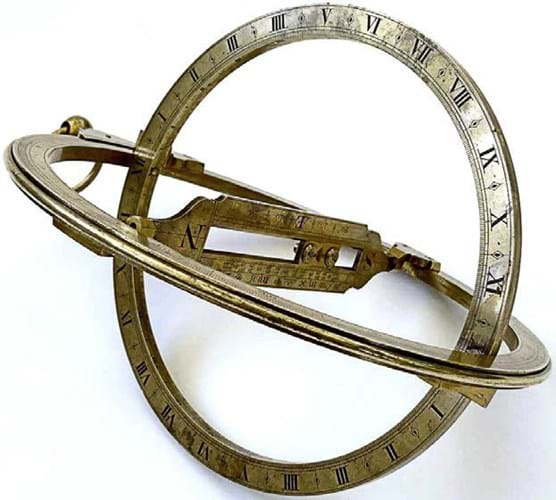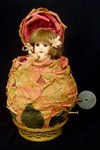
Unusually large 9in diameter, c.1770, universal equinoctial ring dial by Dollond of London, priced £8500 from Jason Clarke Antiques.
Ring dials were an important means for discerning time for navigation purposes.
It is comprised of two concentric quarter inch-thick brass rings which are hinged so that the inner ring may be opened out to 90 degrees of the outer.
A brass bar is set across the centre of the inner ring which contains a sliding gnomon and onto the outer ring is fitted a sliding hanging loop.
This example is truly universal, meaning that it may be operated in both the northern and the southern hemisphere as indicated by the presence of a 0 to 90 degree scale running left and right.
The size of the dial is an important factor: most existing examples are of 4in diameter, but accuracy of reading is improved as size is increased, therefore the 9in diameter of this instrument would have been of significant benefit in more trying circumstances.

Unusually large 9in diameter, c.1770, universal equinoctial ring dial by Dollond of London, priced £8500 from Jason Clarke Antiques.
Dollond history
The dial features the well-known engraving for the Dollond optics business which was set up in Hatton Garden in 1750 by Peter Dollond, with his father John joining him shortly after.
After being run by various family members over the decades, and appointed optician to George III and the Duke of York in 1761, in 1866 William Dollond was the final family member to run the company, finally selling out to a former employee, JR Chant in 1871.
The firm was finally merged with Aitchison & Co in 1927 and it became Dollond & Aitchison. It remained a familiar site on the British high street until 2009 when it became part of Boots the Opticians.














